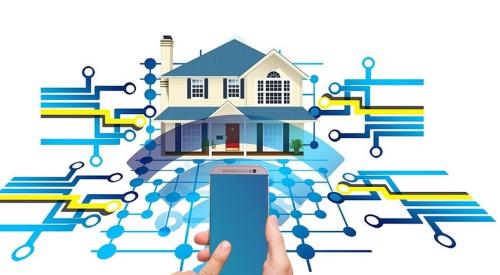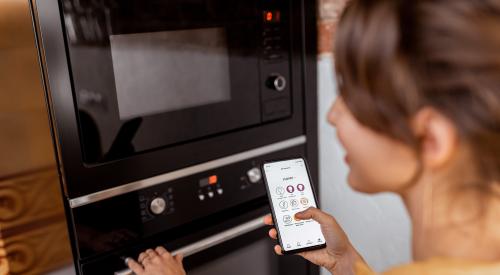Technology has become integrated into our homes with devices such as networked doorbells, smart thermostats, and wireless light bulbs. The Internet of Things promises convenience in modern living for homeowners, but builders are presented with a new challenge: How do you accommodate this emerging need and provide a home that is compatible with the devices of the future? (Image: Unsplash via Pixabay).
It's a question home builders face constantly these days. Some are choosing to respond by avoiding the whole thing altogether, allowing the homeowner to install technology after-market. However, integrating technology into your homes before market can be a key differentiator in a competitive marketplace. And while new technology can often feel intimidating, there are simple and efficient ways to approach incorporating it into your homes.
These solutions don't have to be on the cutting-edge of technology. Instead, they can provide the foundation for tech integration. The result delivers a relatively future-proof setup while providing a key market differentiator, all without a significant expense of time, effort, or overhead for the home builder.
To start, consider the essentials of a connected home. These are elements that almost everyone can use regardless of how interested or committed they are to technology:
●Wireless access points. While the homeowner will ultimately choose their Internet Service Provider (ISP), a hardwired network with additional wireless access points will ensure a strong wi-fi signal in locations such as the garage and backyard.
●Device-friendly power outlets. Lots of new technology products are marketed as wireless but many still need a traditional outlet. Consult your electrical contractor or consultant for forward-thinking outlet placement to cover a variety of potential tech situations.
●Smart thermostats. Every new home needs a thermostat. In addition to providing heat control, the thermostat is commonly the device through which the home becomes inter- and intra-connected. By pre-installing a smart thermostat, you're giving your home a market advantage while taking care of a basic need.
These essentials provide a starting point for builders to step into the Internet of Things revolution, but where do you go from here? Technology evolves quickly, though depending on your location and target market, the latest smart home capabilities may not be in high demand...yet. With that in mind, don’t fall into the trap of thinking that that buyers won't want to pay for technology in their homes.
Instead, let the data and consumer feedback for your target market drive your decision-making. The suggestions above are the proverbial low-hanging fruit, the surefire choices that fulfill the broadest consumer needs. Many other options are available, and the best way forward is to analyze your buyer demographics, offer a variety of appropriate technology upgrades, and see where the market is trending over time. With enough options, your customers will tell you what they are looking for.
The road ahead is more about builders embracing the idea of technology in the home, rather than making specific decisions about integration. This evolution is inevitable, and builders of new homes have an opportunity to seize a major competitive advantage by offering forward-thinking options for technology that has already been absorbed into our everyday lives -- technology that barely existed a mere decade ago. In short, it's time for home builders to embrace the future and do it smartly.













